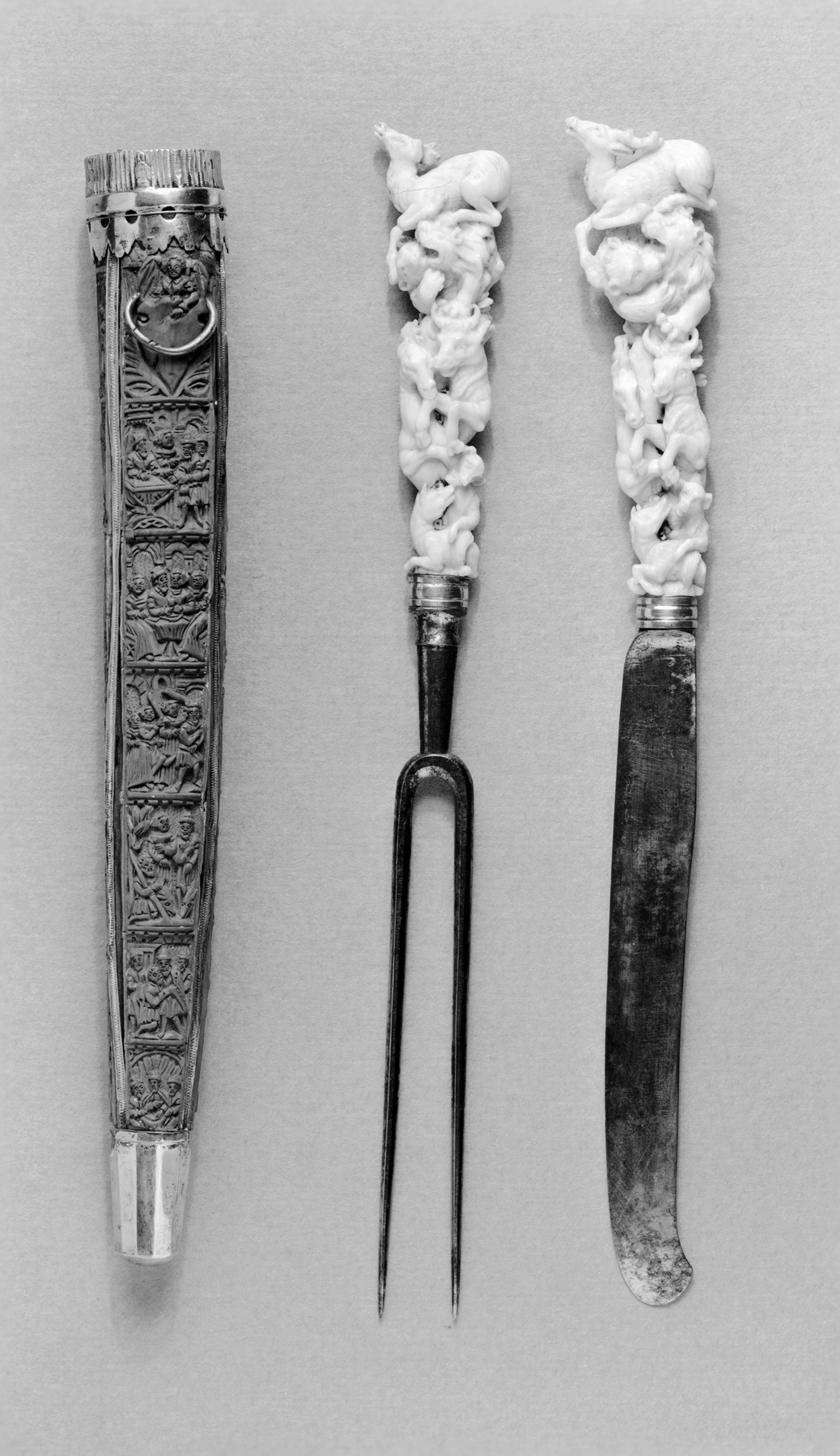Knife-and-Fork Set
(Baroque Europe )
Personal cutlery sets in luxurious materials were frequently presented as wedding gifts. In the 17th century, forks were just beginning to become common, and members of the elite all had their own utensils. Ivory was a popular material for such sets, as was the motif of intertwining animals in an aristocratic culture devoted to the hunt. Though functional, such finely crafted sets might be reserved for display, as they were in the royal collection in Copenhagen.
The blade is made by a different craftsman, marked "Berger," who is otherwise unidentified.
Inscription
Provenance
Provenance (from the French provenir, 'to come from/forth') is the chronology of the ownership, custody, or location of a historical object. Learn more about provenance at the Walters.
Léon Gruel, Paris [date and mode of acquisition unknown]; Henry Walters, Baltimore, 1929, by purchase; Walters Art Museum, 1931, by bequest.
Geographies
Germany (Place of Origin)
Measurements
3 3/8 in. (8.5 cm)
Credit Line
Acquired by Henry Walters, 1929
Location in Museum
Not on view
Accession Number
In libraries, galleries, museums, and archives, an accession number is a unique identifier assigned to each object in the collection.
In libraries, galleries, museums, and archives, an accession number is a unique identifier assigned to each object in the collection.
VO.126 (71.375, 71.375.A, 71.375.B, 71.375.C)


